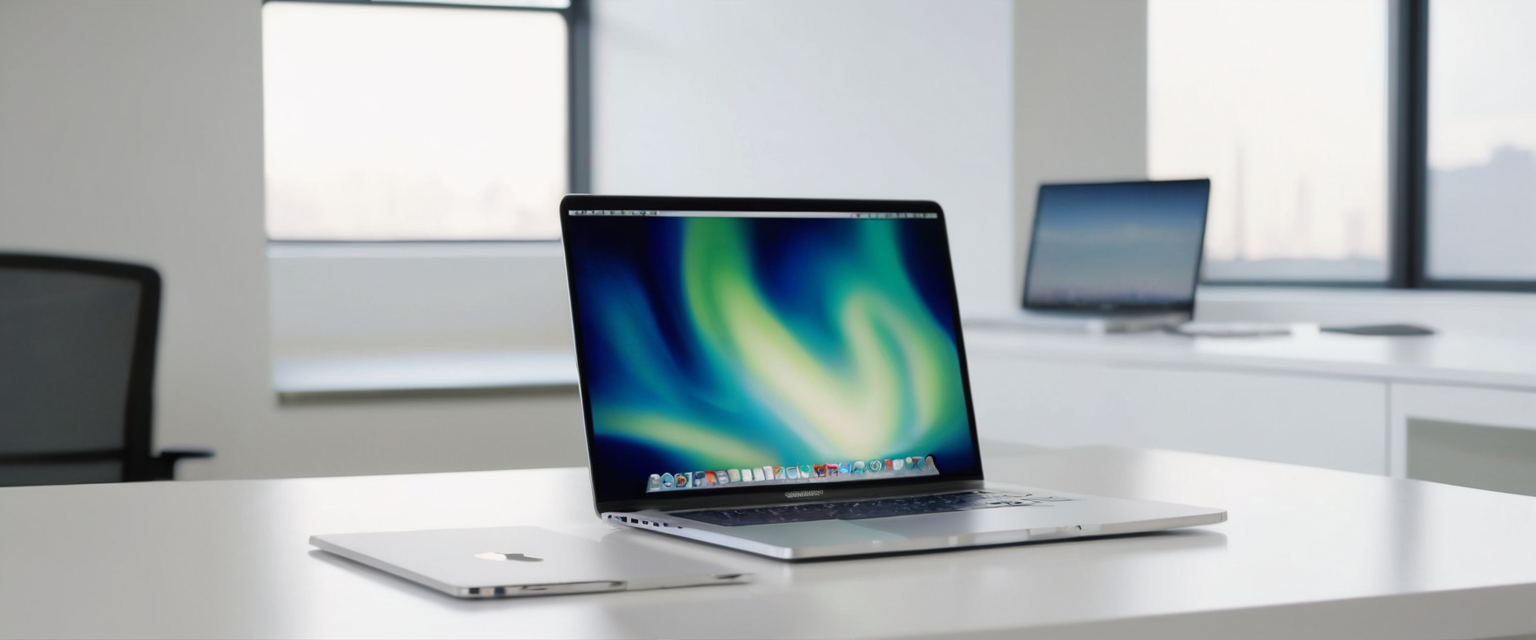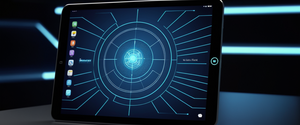
The question of whether MacBooks require antivirus protection remains one of the most contested debates in contemporary cybersecurity discourse, with perspectives ranging from the assertion that macOS built-in defenses render third-party security software unnecessary to the argument that additional layers of protection are essential in an increasingly sophisticated threat landscape. Evidence reveals that while Apple’s security architecture has traditionally provided robust native protection against known threats, the evolving nature of Mac-targeted malware, the exponential growth in Mac market adoption, and the sophistication of modern attack vectors necessitate a nuanced reassessment of security requirements that moves beyond simplistic yes-or-no conclusions. This comprehensive report examines the current state of Mac security, analyzing both the capabilities and limitations of native macOS protections, cataloging the sophisticated threats specifically targeting Apple’s ecosystem, evaluating the role of third-party antivirus solutions, and providing a framework for determining security needs based on individual and organizational risk profiles.
The Evolution of Mac Security Perceptions and Historical Context
The widespread belief that Macintosh computers are inherently immune to viruses and malware has persisted for decades, creating a security posture in the Mac user community that may no longer be appropriate given contemporary threat developments. This perception emerged from a combination of factors, most notably macOS’s Unix-based architecture, which historically provided some inherent security advantages compared to Windows systems, and the significantly lower market share of Apple computers relative to Windows machines during the era when cybercriminals optimized their efforts for maximum return on investment. When computing markets were dominated by Windows operating systems representing over 90 percent of desktop market share, attackers concentrated their efforts on Windows-compatible malware, making the development of Mac-specific threats economically inefficient from a cybercriminal’s perspective. This historical reality created a self-reinforcing cycle where fewer Mac-targeted threats existed because fewer criminals pursued Mac development, and fewer criminals pursued Mac development because relatively few threats existed to justify the effort compared to Windows alternatives.
However, the fundamental parameters that underwrote this security calculus have undergone dramatic transformation. As of 2025, Macintosh computers command approximately sixteen percent of global desktop and laptop market share according to StatCounter data, representing a substantial expansion from their historical single-digit percentages. More significantly, Macs have experienced explosive growth in business and enterprise environments, with approximately ninety-five percent of companies expecting their Mac investments to increase over the next twelve to twenty-four months, according to industry surveys. This dramatic shift in Mac adoption, coupled with the high-value nature of corporate data stored on Apple devices and the lucrative targets represented by business users, has fundamentally altered the risk calculus for cybercriminals. Rather than viewing Macs as peripheral targets, sophisticated threat actors now recognize them as legitimate focal points for criminal enterprises, creating a direct correlation between increased market relevance and increased targeting by advanced malware developers.
The transformation in threat landscape goes beyond mere numbers, reflecting instead a fundamental change in adversary behavior. A shocking seventy-three percent increase in Mac malware incidents compared to the previous year has been documented as of 2025, and a one-thousand percent increase in Mac-targeted malicious programs was observed in a 2021 study, demonstrating that the threat trajectory is not merely increasing but accelerating at unprecedented rates. These statistics represent far more than abstract data points; they constitute empirical evidence that the foundational assumptions underlying decades of Mac security philosophy require substantial revision.
macOS Built-In Security Architecture and Native Defense Mechanisms
Apple has invested substantial resources in creating a multilayered security architecture within macOS, implementing multiple independent protective mechanisms designed to intercept threats at different stages of the attack lifecycle. Understanding these native protections is essential for comprehending both the strengths and the limitations of Apple’s approach to macOS security, as this foundation determines what additional protection might realistically accomplish and what gaps may remain despite Apple’s comprehensive efforts.
Three-Layer Defense Architecture
Apple structures its malware defenses according to a three-tier model that attempts to prevent, block, and remediate threats across distinct attack phases. The first layer of defense focuses on preventing the launch or execution of malware through the App Store ecosystem and the Gatekeeper technology combined with Notarization. This preventive layer operates before malware execution occurs, attempting to stop threats from ever reaching user systems. The second layer of defense works to block malware from executing on customer systems through Gatekeeper, Notarization, and the XProtect scanning technology. This layer assumes that some malware may reach the system despite preventive efforts and therefore focuses on identifying and halting execution at runtime. The third and final layer involves remediating malware that has managed to execute through XProtect’s remediation capabilities, attempting to remove infected code and restore system integrity even after a breach has occurred.
XProtect: Signature-Based Detection and Removal
XProtect represents Apple’s proprietary antivirus technology, functioning as a built-in scanning engine that has been included in every macOS system since 2009. This technology performs signature-based detection and removal of malware, utilizing YARA signatures as the fundamental mechanism for identifying known threats. Apple maintains a database of known malware signatures and updates these signatures automatically on a regular basis, independent from standard system updates, allowing the company to respond to emerging threats between major OS releases. When XProtect detects known malicious content, it blocks execution of the infected program, moves the threat to quarantine, and alerts users through the Finder interface.
The operational scope of XProtect extends beyond simple detection, incorporating multiple detection mechanisms designed to catch threats through different analytical approaches. In macOS versions 10.15 and later, XProtect performs threat checking whenever an application is first launched, whenever an application’s files have been modified in the file system, or whenever XProtect signatures are updated. This multi-trigger approach ensures that previously dormant threats can be detected if signatures are updated, even if the malicious file has existed on the system undetected. Additionally, XProtect incorporates an advanced behavioral analysis engine designed to detect unknown malware based on suspicious operational patterns rather than signature matching, allowing the system to identify novel threats that have not yet been catalogued in Apple’s signature database.
However, XProtect’s reliance on signature-based detection creates inherent limitations that define its protective scope. Signatures protect against known threats by definition, meaning that zero-day malware exploiting previously unknown vulnerabilities falls outside XProtect’s detection capability until Apple reverse-engineers the threat and releases updated signatures. Some sources indicate that XProtect does not identify as many types of potential malware as third-party antivirus solutions, leaving potential gaps in its protective library. Additionally, XProtect scans only applications that are newly launched or have been modified, meaning that malware that has been dormant and unchanged since installation may escape detection until an update triggers re-scanning.
Gatekeeper and Notarization: Pre-Execution Validation
Gatekeeper and Notarization together form a sophisticated vetting system designed to validate software integrity and origin before allowing execution. Gatekeeper automatically blocks software from developers that Apple has not approved, preventing unauthorized applications from launching without explicit user intervention. This technology has undergone significant enhancement over successive macOS versions, with modern implementations checking for malware every time an application runs rather than only at first launch. Notably, in fall 2024, Apple patched a critical vulnerability that had previously allowed the bypass of Gatekeeper through a simple right-click context menu manipulation, which cybercriminals had widely exploited in malware distribution campaigns.
Notarization complements Gatekeeper by subjecting applications to Apple’s scanning service before distribution. Developers who want to distribute applications outside the App Store submit their applications to Apple’s notarization service, which scans the software for known malware and, if none is detected, issues a Notarization ticket that Gatekeeper can verify. Critically, Apple can issue revocation tickets for previously notarized applications that are later discovered to be malicious, even if they were initially approved. The system performs checks for new revocation tickets in the background much more frequently than standard system updates, allowing Apple to respond to newly discovered threats with greater velocity than traditional update mechanisms would permit.
System Integrity Protection and Sandboxing
macOS implements System Integrity Protection (SIP), a mechanism designed to prevent the modification of critical system files even by users with administrative privileges. This protection works by placing core system components on a separate, cryptographically locked system volume that cannot be modified through ordinary means, making it extraordinarily difficult for malware to achieve the level of system compromise that would be necessary for persistent infection. Additionally, macOS implements application sandboxing, whereby applications run in restricted execution environments that limit their access to system resources. Each sandboxed application receives a specific list of resources it requires and cannot request access to anything outside this sandbox without crashing, dramatically limiting the potential damage any single compromised application could inflict.
FileVault Encryption
FileVault 2 encrypts user data at rest, ensuring that even if a Mac is stolen or falls into unauthorized physical possession, encrypted data remains inaccessible without the encryption key. However, FileVault’s protection scope is explicitly limited to preventing data access when the system is powered off or locked; while the system is running and unlocked, FileVault provides no protection against malware executing with user privileges.
The Expanding Threat Landscape: Modern Mac Malware in 2025
Despite Apple’s sophisticated security architecture, the contemporary threat landscape facing Mac users has grown substantially in both volume and sophistication. Understanding the specific categories of malware threatening macOS systems provides essential context for assessing whether native protections prove sufficient or whether additional defensive layers merit consideration.
Information Stealers: The Dominant Threat Category
The most significant development in Mac malware evolution involves the emergence of information stealers as the dominant threat category, fundamentally shifting the attack methodology landscape. Jamf Threat Labs identified that infostealers topped Mac malware detection charts at 28.36 percent in 2024, followed closely by adware at 28.13 percent, trojans at 16.61 percent, and potentially unwanted programs at 15.06 percent. This represents a dramatic shift from historical threat profiles that were dominated by adware and browser hijackers, indicating that cybercriminals have fundamentally changed their operational focus toward credential and data exfiltration rather than user annoyance and advertisement delivery.
Poseidon Stealer exemplifies this new generation of Mac-targeted threats, gaining particular prominence as of 2024 and accounting for seventy percent of information stealer detections on macOS by mid-year. Originally developed as a competitor to Atomic Stealer by someone using the alias “Rodrigo4,” Poseidon exhibits capabilities specifically designed to evade modern defenses while maximizing data exfiltration. The malware steals cryptocurrency from over one-hundred-sixty different wallet types and passwords from web browsers, password managers including Bitwarden and KeePassXC, file transfer applications like FileZilla, and VPN configurations. After a period of relative quiet from October 2024 through March 2025 resulting from Apple’s Gatekeeper patch and Poseidon’s temporary withdrawal from the market, the malware resurged in evolved form as Odyssey Stealer, featuring enhanced anti-sandboxing mechanisms, persistence through launch daemons, and botnet capabilities for remote execution and control.
Trojan Horses and Remote Access Tools
Trojans represent another significant threat category, with sophisticated variants like OSX.Dok demonstrating how malware can disguise itself as legitimate software updates while actually hijacking network traffic and creating persistent backdoor access. Remote Access Tools have similarly evolved, with Hidden Virtual Network Computing (HVNC) appearing as a macOS-specific threat that allows attackers to control infected systems without user knowledge. The discovery of HVNC variants targeting macOS, originally developed for Windows systems but adapted for Apple platforms, demonstrates the efficiency with which threat actors port successful attack frameworks across operating systems once market conditions make such porting economically viable.
Protect Your Digital Life with Activate Security
Get 14 powerful security tools in one comprehensive suite. VPN, antivirus, password manager, dark web monitoring, and more.
Get Protected NowRansomware and Cryptomining Malware
While less prevalent than information stealers and adware, ransomware represents a particularly concerning threat category due to the severity of potential impacts. KeRanger represented the first significant ransomware targeting macOS, demonstrating that Apple systems are not categorically immune to encryption-based extortion campaigns. Similarly, cryptomining malware like LoudMiner exploits Mac hardware resources, consuming CPU and GPU capacity to mine cryptocurrency without user authorization, causing system overheating, performance degradation, and accelerated hardware deterioration.
Cross-Platform and Supply Chain Threats
Cybercriminals increasingly develop cross-platform malware written to run on both Windows and macOS, eliminating the need to maintain separate code bases for different targeting campaigns. The XcodeGhost incident exemplified supply chain vulnerability, wherein developers unknowingly downloaded a modified version of Apple’s official Xcode development tool, leading to infected applications being published in the App Store itself. This demonstrates that threats can bypass even Apple’s trusted distribution channels when supply chain security is compromised.
Social Engineering and Phishing: The Human Vulnerability Vector
While malware represents a significant threat, social engineering attacks remain the primary infection vector for many threats targeting Mac users. Phishing attacks account for approximately sixteen percent of breaches according to the Verizon 2025 Data Breach Investigations Report, and the median time for a user to fall for a phishing email is less than sixty seconds. The velocity of these attacks combined with their sophistication presents a challenge that technical protections alone cannot fully address, as user decision-making and trust represent the ultimate determinant of campaign success.
Over ninety percent of cyber attacks originate from phishing, with attackers posing as familiar organizations to lure users into compromising their security. The Shlayer adware campaign began with fake Flash Player updates distributed through emails and malicious websites, demonstrating how social engineering tactics coupled with legitimate-looking deception can achieve massive distribution despite native security protections. Jamf Threat Labs identified common brand impersonations including Netflix, Outlook, DHL, AT&T, and Amazon, targeting users who are statistically likely to maintain accounts with these organizations and therefore may be susceptible to account-related urgency tactics.
The rise of AI-enhanced social engineering represents a particularly concerning development, with more than eighty-two point six percent of all phishing emails analyzed between September 2024 and February 2025 utilizing some form of artificial intelligence. Business Email Compromise attacks have nearly doubled in frequency according to the Verizon DBIR, with pretexting becoming the dominant social engineering tactic and accounting for significant financial losses, with the FBI’s IC3 reporting that BEC alone resulted in 2.77 billion dollars in losses in 2024.

Hardware Vulnerabilities: The GoFetch Side-Channel Attack
Beyond software vulnerabilities and malware, Mac hardware itself contains architectural weaknesses that require consideration. The GoFetch vulnerability, a microarchitectural side-channel attack affecting Apple M-series processors, allows attackers to extract cryptographic keys from constant-time implementations when data memory-dependent prefetchers are exploited. This vulnerability stems from core chip design rather than software implementation, making it impossible to patch through standard software updates. The data memory-dependent prefetcher, designed to improve performance by predictively loading likely memory addresses, inadvertently creates data-dependent timing variations that enable key extraction despite implementations that should theoretically prevent such attacks.
Critically, mitigation requires performance sacrifices that may prove prohibitive. For M3 chips, enabling data-independent timing mode can disable the prefetcher and prevent exploitation, but at significant performance cost. M1 and M2 chips lack this mitigation option without kernel-level support that Apple has not yet implemented. This vulnerability demonstrates that hardware-level security flaws can persist even when software protections are robust, representing a new category of threat that neither traditional antivirus software nor macOS’s built-in protections can address.
Zero-Day Vulnerabilities and Recent Exploits
The threat landscape includes not only known malware but also zero-day vulnerabilities exploited by sophisticated threat actors. In 2025, Apple has already addressed five actively exploited zero-days, including the CVE-2025-43300 vulnerability affecting the Image I/O framework that allows out-of-bounds memory writes resulting from malicious image processing. These vulnerabilities demonstrate that despite Apple’s security investments, exploitable flaws continue to emerge, and threat actors actively exploit them in sophisticated campaigns before patches become available.
Arguments for Third-Party Antivirus: Supplementary Protection
Security experts and antivirus vendors present several arguments supporting the installation of third-party antivirus software on Macs, emphasizing capabilities that exceed native protections. These arguments warrant consideration despite the traditional Apple position that additional security software proves unnecessary.
Detection of Unknown Threats
Third-party antivirus solutions employ multiple detection methodologies beyond signature matching, including behavioral analysis and machine learning algorithms designed to identify previously unknown malware. While XProtect includes a behavioral analysis engine, third-party solutions often leverage larger threat intelligence databases accumulated across global install bases, potentially identifying novel threats more rapidly than Apple’s internal processes. Additionally, many third-party solutions monitor broader attack phases, detecting malware during the pre-execution phase or at network level before local file system compromise occurs.
Proactive Threat Monitoring
Modern antivirus solutions provide real-time monitoring of system activities, scanning files and processes as they execute rather than only at application launch. This continuous monitoring creates additional detection opportunities for threats that may persist in memory or operate through novel execution mechanisms that avoid traditional application launch detection.
Cross-Platform Consistency
Organizations operating heterogeneous environments combining Windows, Linux, and macOS systems can deploy consistent security policies and monitoring across all platforms through unified third-party solutions. This consistency simplifies security management and ensures that organizational security standards apply uniformly regardless of operating system, reducing the administrative burden of maintaining separate security approaches for different platforms.
Behavioral Detection Capabilities
Some third-party solutions incorporate advanced behavioral detection mechanisms designed to identify suspicious activities that may not match known malware signatures, including unusual file access patterns, suspicious network connections, and anomalous process behaviors. These behavioral approaches can identify advanced persistent threats and sophisticated malware that might evade signature-based detection.
Arguments Against Third-Party Antivirus: Performance and Interference Concerns
Conversely, compelling arguments suggest that third-party antivirus software may prove counterproductive on macOS systems, introducing performance degradation and system instability that outweigh potential security benefits. These concerns have historically been emphasized by Apple and many experienced Mac users.
Performance Degradation
Third-party antivirus software necessarily consumes system resources through continuous background scanning, file monitoring, and network inspection processes. On resource-constrained systems or older hardware, this resource consumption can prove substantial, degrading overall system responsiveness and performance. Users have reported significant performance issues when running third-party security software, with some antivirus products consuming excessive CPU and memory resources that detract from primary system functionality.
Kernel Extension Interference
Historically, Mac antivirus software required kernel extensions to function, and these kernel extensions necessarily reduce the security of the operating system by creating lower-privilege execution layers that can themselves become attack vectors. More recent implementations have moved toward user-space detection, reducing but not eliminating this concern. The architectural requirement to hook system calls and intercept file operations creates inherent fragility and potential incompatibility with system updates.
System Instability and Incompatibility
Third-party security software can interfere with normal macOS operation, introducing crashes, system freezes, and unexpected behaviors. These issues occur because antivirus software necessarily inserts itself into critical system paths, and any bugs or incompatibilities in this integration can cascade into system-level problems. Apple explicitly recommends against installing third-party antivirus software, warning that such software can cause security issues and make macOS appear buggy.
False Sense of Security
Some critics argue that third-party antivirus software may create a false sense of security, leading users to engage in riskier behaviors that they would avoid if they maintained appropriate skepticism about their protection level. This behavioral shift could paradoxically increase vulnerability despite additional security software.
Vulnerability Disclosure and Patch Velocity
A critical consideration involves Apple’s approach to vulnerability disclosure and the speed of patch availability. Apple’s disclosure practices often provide minimal technical details about vulnerabilities, making it difficult for security professionals to assess impact and prioritize patching. The company released an exceptionally high number of vulnerabilities in November 2025, addressing one-hundred-five vulnerabilities in macOS 26.1 and fifty-six vulnerabilities in iOS 26.1 and iPadOS 26.1, many without detailed severity ratings that would help organizations prioritize deployment. This opacity regarding vulnerability severity complicates risk assessment and patch management planning.
However, Apple has implemented Rapid Security Response, which delivers security improvements between major OS updates rather than requiring users to wait for the next version release. This accelerated patch delivery mechanism enables faster mitigation of discovered vulnerabilities compared to the historical quarterly update cycle. Background security updates also install silently without requiring user action, improving patch adoption rates compared to systems requiring explicit user intervention.

Risk Assessment Framework: Determining Personal and Organizational Needs
Rather than applying a universal answer to the question of whether Macs require antivirus, a more productive approach involves assessing individual risk profiles through systematic evaluation of usage patterns and threat exposure.
Low-Risk Scenarios
Users operating in low-risk scenarios demonstrate certain characteristics that make additional antivirus software less critical. These users exclusively download applications from the official Mac App Store, avoiding third-party application sources where malware distribution commonly occurs. They keep macOS and all installed applications current with the latest security updates through automatic update mechanisms. They practice caution when opening email attachments or clicking links from unfamiliar senders, avoiding the primary social engineering attack vectors. They do not engage in risky browsing habits such as visiting untrusted websites or downloading files from questionable sources. They maintain strong, unique passwords and practice good account security hygiene. For these users, macOS built-in protections prove substantially adequate, and the performance overhead of third-party software outweighs marginal security benefits.
High-Risk Scenarios
Conversely, users operating in high-risk scenarios face substantially elevated threat exposure that warrants consideration of additional protections. These users frequently download applications from sources beyond the App Store, including websites and developer distributions where malware infiltration becomes possible. They do not maintain current software, either through deliberate security update deferral or due to hardware obsolescence preventing updates. They frequently engage with downloaded files from untrusted sources, including email attachments, torrent files, and files from less reputable websites. They work in environments where they access or handle sensitive data that would warrant particular protection, such as financial information, intellectual property, or personal identifiable information. They frequently use public Wi-Fi networks without additional security precautions. They operate business systems where the cost of compromise vastly exceeds the cost of security software. For these users, third-party antivirus software provides meaningful supplementary protection against sophisticated threats that native protections may not fully address.
Organizational Considerations
Organizations operating enterprise Mac deployments face distinct security requirements from individual users, necessitating more comprehensive approaches. Business Email Compromise attacks cost organizations an average of 4.88 million dollars in 2024, while phishing attacks average 4.91 million dollars, creating clear economic justification for comprehensive endpoint protection. Organizations increasingly face regulatory requirements mandating specific security controls, making comprehensive antivirus deployment necessary for compliance even if native protections might technically suffice. Enterprise threat landscapes include targeted attacks against organizational data and insider threats that require centralized monitoring and logging capabilities beyond individual system protections. Mobile device management integration and unified endpoint protection require coordination across heterogeneous device populations, necessitating unified security approaches rather than platform-specific implementations.
For organizational environments, comprehensive security strategies should include identity and access management requiring multi-factor authentication and device verification before network access. Compliance frameworks including the macOS Security Compliance Project, CIS Benchmarks, or NIST 800-171 should inform organizational security baselines. Endpoint protection leveraging built-in macOS features like XProtect, Gatekeeper, and Notarization combined with threat-hunting capabilities designed specifically for Mac-targeting malware proves more effective than single-solution approaches. Zero Trust Network Access strategies should restrict network access to only approved resources rather than assuming implicit trust based on device ownership.
Emerging Best Practices and Recommendations for 2025
Current cybersecurity best practices suggest that a multi-layered defense strategy proves more effective than reliance on any single protective mechanism, whether native or third-party.
Layered Defense Strategy
The most effective security posture combines built-in macOS protections with user education, software update discipline, and supplementary protections appropriate to individual risk profiles. This layered approach ensures that no single point of failure compromises security while maintaining reasonable performance and usability balance.
Rapid Security Response and Automatic Updates
Organizations and individuals should enable Rapid Security Response and maintain automatic security updates enabled by default, ensuring that patches deploy rapidly without requiring manual intervention. The evolution toward more frequent security updates outside major OS releases represents a significant security improvement that maximizes protection velocity.
User Education and Awareness
Since social engineering remains the primary attack vector and human decision-making ultimately determines vulnerability to phishing and manipulation, comprehensive security awareness training proves essential. Users require periodic training to recognize phishing attempts, suspicious links, and social engineering manipulation. Organizations should conduct simulated phishing campaigns to identify vulnerable users requiring additional training.
Application Source Restrictions
Restricting application installations to the official Mac App Store provides substantially higher assurance of application integrity than allowing downloads from arbitrary internet sources. Organizations should enforce this restriction through configuration management and endpoint policies where operationally feasible.
Endpoint Detection and Response
For enterprise environments, endpoint detection and response platforms designed specifically for macOS provide superior threat hunting and investigation capabilities compared to traditional antivirus software. Solutions like SentinelOne, CrowdStrike, and Jamf Protect provide behavioral analysis, threat intelligence integration, and centralized incident response capabilities that exceed traditional antivirus functionality.
Selective Third-Party Scanning
Rather than continuously running third-party antivirus software with its associated performance overhead, users and organizations may benefit from periodic scanning with reputable tools like Malwarebytes, which can identify threats that may have evaded macOS protections. This approach provides supplementary detection without continuous performance degradation, though it lacks the real-time protection of continuous monitoring.
Lockdown Mode for High-Risk Users
Users facing targeted attacks or experiencing high-risk threat profiles should consider enabling Apple’s Lockdown Mode, which restricts certain features to reduce attack surface against sophisticated spyware and targeted attacks. While Lockdown Mode creates substantial functionality limitations, for users facing extreme threat levels it provides maximal protection.
Closing the Case on MacBook Antivirus
The question of whether MacBooks require antivirus software admits no simple universal answer applicable to all scenarios and user profiles. The traditional position that Macs require no additional security protection becomes increasingly untenable in 2025’s threat landscape, where Mac malware has increased seventy-three percent year-over-year, sophisticated information stealers dominate threat rankings, and cybercriminals actively target Apple devices with the same resources and sophistication they devote to Windows systems. Simultaneously, the claim that all Mac users require comprehensive third-party antivirus software also overstates the case, particularly for low-risk users practicing good security discipline and relying exclusively on trusted application sources.
Instead, a productive framework for security decision-making emphasizes risk-based assessment where users and organizations evaluate their specific threat exposure, usage patterns, and tolerance for performance overhead before determining appropriate security measures. Users practicing exceptional security discipline, maintaining current software, avoiding untrusted application sources, and engaging cautiously with email attachments and links derive marginal benefit from third-party antivirus that may not justify performance overhead. Conversely, users with higher-risk profiles, enterprise organizations managing heterogeneous device populations, and scenarios involving sensitive data handling warrant comprehensive third-party endpoint protection that provides detection capabilities exceeding native protections.
Ultimately, macOS security in 2025 demands that users and organizations abandon the outdated assumption that Macs require no security consideration and instead adopt evidence-based approaches calibrated to their specific threat exposure and risk tolerance. Apple’s security architecture provides an excellent foundation, but it cannot alone address the full spectrum of contemporary threats targeting Mac users. Whether supplementary protections prove necessary depends not on categorical answers to whether Macs are inherently secure, but rather on specific assessment of individual vulnerability and threat profile.






